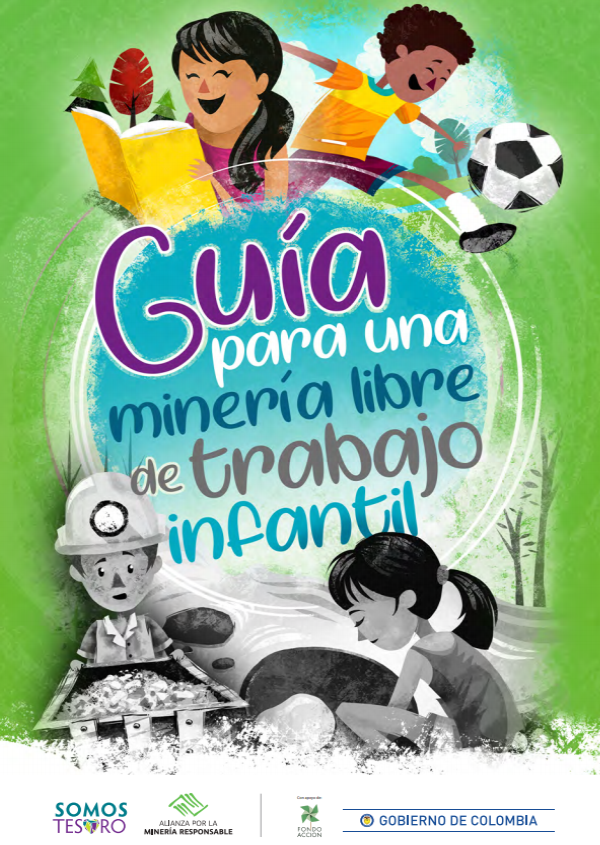Esta guía contiene información relacionada con los derechos de los niños, niñas, adolescentes y sus familias; el fenómeno del trabajo infantil en Colombia y, de manera particular, en la minería.
También presenta la ruta de reporte del trabajo infantil, una herramienta que sirve para identificar los riesgos del trabajo infantil en una pequeña mina y los programas sociales que ofrecen las instituciones públicas y privadas, dirigidas a mitigar los efectos de la problemática en los territorios.
English version
This guide, created within the framework of the Somos Tesoro project and in collaboration with Minminas, Mintrabajo, ICBF and Fondo Acción, contains everything that a Colombian artisanal and small-scale miner must know about child labour.
The guide’s content was developed by combining the experience and knowledge of the entities involved and the results of a perception study on child labour carried out by ARM in 8 municipalities of Antioquia and Boyacá, where more than 300 miners participated.
Therefore, we present a didactic guide, written in a simple language, which explains: what rights children, adolescents and their families have and why they exist; the scope of the child labour problem in Colombia and, particularly, in mining; how to report and identify the risks of child labour in artisanal and small-scale mining; what actions the ICBF, Mintrabajo and Minminas are taking in case of encountering child labour; what the corresponding sanctions are; what social programs are offered by public and private institutions aimed at mitigating the effects of the problem in the territories; and finally how to apply for protected adolescent work authorizations.
child labour

